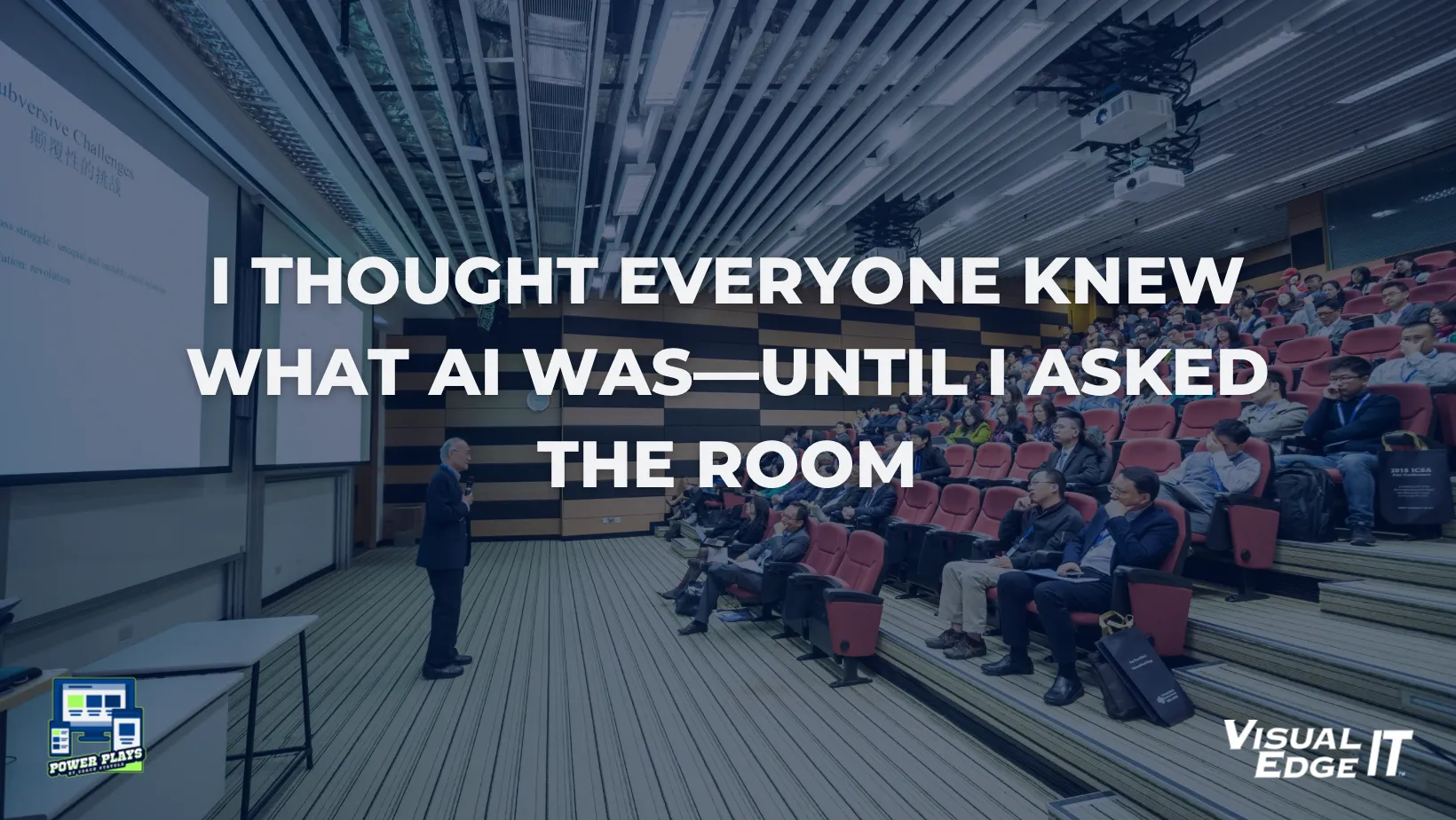Two Truths About AI That Changed the Way I Lead

By Eric StavolaBefore we dive into frameworks or fancy terminology, I want to offer you two core concepts that continue to shape how I think about AI and business:
- Speed is the new value driver.
- Whether we’re trying to serve a client faster, train a team quicker, make a decision ahead of the competition, or apply technology to compress timelines—speed is the variable we’re solving for. Faster with less risk. Faster with more clarity. Faster with more impact.
- Technology, when misapplied, is worthless.
- I’ve seen organizations spend millions on systems that never aligned to a real process, culture, or outcome. Without strategic application, technology becomes shelfware—or worse, confusion in motion.
If you anchor to those two truths—speed and intentionality—you begin to see AI not as magic, but as a multiplier.
Now, I don’t claim to be an AI expert. I approach this topic with the same posture I encourage in others: curious, disciplined, and humble. But after spending years in tech, security, and business transformation, I’ve seen how AI breaks down into systems we can actually lead.So let me walk you through the way I was taught to understand this—and how I’m helping others apply it.
Most Organizations Have Been Doing AI—They Just Didn’t Call It That
For years, many companies have taken advantage of Robotic Process Automation (RPA) and Machine Learning (ML). That’s been the backbone of a lot of the “digital transformation” efforts you’ve heard about.But here’s the thing: AI is not one thing. It’s better understood as a system of eight dimensions—from how it perceives the world to how it reasons and interacts.Here’s the breakdown:
The Eight Dimensions of AI (At a Glance)
- Perception – Seeing and interpreting (e.g., computer vision, voice recognition)
- Reasoning – Making logical decisions from rules or constraints
- Knowledge Representation – Storing and retrieving facts, relationships, and models
- Planning – Sequencing steps toward a goal
- Learning – Adapting based on new data or outcomes
- Natural Language Processing (NLP) – Understanding and generating language
- Interaction – Engaging users through interfaces, voice, or chat
- Autonomy – Taking action without ongoing human instruction
Quick Breakdown: RPA vs ML vs GPT vs Conversational AI
| Technology | Core Functionality | How It Works | Typical Use Cases | Key Limitations |
| RPA | Automates rule-based tasks | Mimics human actions on digital systems using strict rules | Data entry, form processing | Can’t adapt; breaks with change |
| Machine Learning | Identifies patterns and learns from data | Trained on datasets to make predictions and improve over time | Fraud detection, forecasting, image analysis | Requires large quality datasets |
| GPT | Generates human-like text and understands context | Uses transformer-based deep learning models (LLMs) | Writing, summarizing, code generation | Can hallucinate or misinterpret nuance |
| Conversational AI | Enables natural interactions via voice or chat | Combines NLP, ML, and sometimes LLMs like GPT | Virtual assistants, chatbots, support | Struggles with ambiguity without strong design |
What’s interesting here is this: Conversational AI isn’t the same as “chatting with AI.” You’ll get very different results depending on the tools, architecture, and design of the conversation.
The Future Is Teams of AI Agents That Reason Together
Now here’s where it gets exciting—and humbling.We’re moving from tools to personas, then from personas to agents, and now toward AI teams.
- A persona is a role-based design—think “Digital Sales Engineer.”
- An agent takes that persona and gives it purpose, autonomy, and task execution.
- But a team? That’s where things evolve. AI agents start reasoning with one another—challenging ideas, trading context, reconciling inputs. It’s not just collaboration; it’s cognitive distribution.
When AI agents begin acting like functional teams, you’re no longer just automating tasks—you’re scaling decision-making.
This is the type of development that forces leaders to rethink team design, accountability, and even ethics.
Every Day I Find a New Use Case
That’s the beauty—and the challenge—of this moment in history.One day it’s a marketing agent rewriting messaging in our tone.The next, it’s a security agent summarizing threats from ten sources.Then it’s a research assistant that actually understands the context of a sales call.
AI is not a one-and-done deployment. It’s a leadership discipline.And every day, the frontier moves.
What to take away from this
I started this article with two big truths. Let me leave you with one more:You don’t need to be an expert in AI to lead with it.But you do need to be fluent in how it drives value, risk, and behavior.So stay humble. Stay curious. And keep challenging yourself to ask the better question—not “What does this tool do?” but:
“What part of my business could move faster, safer, or smarter if I applied this intentionally?”
That’s how we lead AI—not with hype, but with purpose.